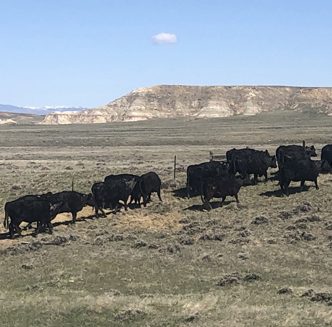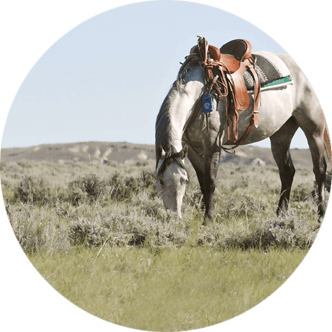Texas A&M AgriLife shares how to protect pets, plants and pipes from freezing temperatures
Winter weather with sub-freezing temperatures is forecasted throughout much of the U.S. in recent weeks.
With this, Texas A&M AgriLife Extension Service experts have offered some tips on how to protect plants, pipes and pets from the cold.
Protect pets during winter weather
Experts at the Texas A&M Veterinary Medical Diagnostic Laboratory shared some tips about caring for pets during winter weather.
Pets should be kept inside during the day and night. If dogs must be left outside for any time, they should have a draft-free shelter large enough to stand and turn around in, yet small enough to retain body heat.
Use a layer of straw or other bedding material to help insulate them against the cold. Make sure the entrance faces away from incoming wind and snow.
Keep cats indoors. Be mindful, cats left outdoors in cold weather seek shelter and heat under the hoods of automobiles and can be injured or killed when starting the engine. Banging loudly on the hood of a vehicle a few times before starting the engine will help avoid tragedy.
Be aware of pets around salt and deicers. Salt and chemicals on sidewalks to combat ice buildup can irritate skin and be ingested.
Thoroughly clean pets’ paws, legs and abdomen to prevent ingestion of toxic substances and prevent their pads from becoming dry and irritated. Signs of toxic ingestion include excessive drooling, vomiting and depression.
Winter is also a good time to leave pets’ coats a little longer than normal to provide them as much warmth as possible.
Protecting plants from freeze damage
Frosts and freeze can damage or kill exposed plants, especially those in containers, according to Lisa Whittlesey, AgriLife Extension program specialist and international coordinator of the Junior Master Gardener Program.
Damage can vary greatly among plant varieties, and cold-sensitive plants will require more protection than hardier plants.
AgriLife Extension has comprehensive information on protecting landscape plants and horticultural crops from frost and freezes.
“Watering plants and making sure they are not drought-stressed before freezing temperatures arrive can help,” Whittlesey said. “Watering just before the freeze can also help because water creates warmth and loses heat slowly.”
“Drought-stressed plants are more susceptible to the cold,” she added. “And if a plant can’t be brought inside, the best option is to cover them. Remember to place them in a location with ample sunlight and to water them.”
Plants in containers should be moved inside of the home or garage or any other space where temperatures will stay above freezing.
If container plants can’t be moved indoors, put them on the south side of the house, water them well and pile on mulch, leaves or hay to protect the roots and/or cover them with a frost blanket. Cold-sensitive landscape plants can also be covered with similar protection.
When covering plants, drape them with cardboard or cloth material to the ground and secure it, Whittlesey suggested. The idea is to trap enough warm air escaping from the soil to protect plants from a killing freeze.
Whittlesey also noted stringing holiday lights around sensitive plants and covering them with a tarp can provide protection from light freezes.
Protect pipes from freezing
When it comes to freeze damage to homes, protecting exposed pipes is critical when temperatures dip below freezing.
Joel Pigg, AgriLife Extension program specialist and Texas Well Owner Network coordinator, said homeowners should protect pipes around the house or in well houses while the weather is good.
Water pipes can freeze and burst when the outside temperature reaches 20 degrees Fahrenheit or below, but Pigg said to take precautions anytime temperatures dip below freezing. Pipes with northern exposure face an increased risk of freeze.
“It’s best to act early, rather than when the storm is coming in,” he said. “Prepare now because supplies of insulation and parts might be limited during a rush for items needed to protect pipes just before freezing temperatures arrive.”
Exposed pipes, including outdoor faucets, water sprinklers, water pipes in basements, crawl spaces, attics or garages, pipes running along exterior walls, swimming pool supply lines and well houses are especially susceptible to freezing temperatures.
Leaving water running slightly does help during prolonged freezing temperatures, and heat lamps to raise temperatures in lesser-insulated spaces with pipes like well houses or basements can help prevent breaks, according to Pigg.
Outdoor water systems should be drained and covered or allowed to drip slowly to help protect from damage.
Many protective products to insulate water pipes like sleeves, insulation or heat tape are available at local plumbing supply retailers. Newspapers can also provide some protection to exposed pipes, as long as exposure is not prolonged.
Foam faucet covers also add protection to an area susceptible to freezing.
“Covers are around four dollars, and insulation or heat tape are very inexpensive relative to paying for repairs,” Pigg said. “Adding protective elements to any weak points is a good investment against short-term freezes.”
Adam Russell is a communications specialist for Texas A&M AgriLife. This article was originally published by AgriLifeToday on Jan. 16.





